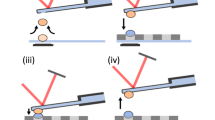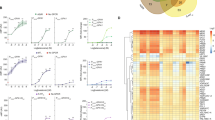Abstract
CELL interactions play a major part in the development of a metazoan organism. An ideal system for studying cell interactions is one in which two and only two homogenous cell populations are involved. This condition is met in unicellular systems in which cells of two differing mating types may be induced to enter the sexual phase of their life cycle and conjugate. Conjugation in Tetrahymena is characterised by an association of cells of complementary mating types into pairs joined at their anterior tips. Pairing does not begin until ∼1 h after mixing starved cells of complementary mating types (Fig. 1). It has recently been shown that a cell interaction called costimulation occupies this 1-h period; costimulation is required for and distinct from cell pairing1,2. A block at the level of costimulation necessarily blocks pairing. Therefore, the absence of pair formation may arise from conditions which affect costimulation, or pairing, or both. We demonstrate here, for the first time, a requirement for an extracellular factor during the costimulation interaction and show that the factor behaves neither like a gamone nor like an agglutinin. Its properties suggest a role in mediating a direct interaction between cells, and involving physical proximity or contact between participating cells.
This is a preview of subscription content, access via your institution
Access options
Subscribe to this journal
Receive 51 print issues and online access
$199.00 per year
only $3.90 per issue
Buy this article
- Purchase on Springer Link
- Instant access to full article PDF
Prices may be subject to local taxes which are calculated during checkout
Similar content being viewed by others
References
Bruns, P. J. & Palestine, R. F. Devl Biol. 42, 75–83.
Allewell, N. M. & Wolfe, J. Exp. Cell Res. 109, 15–24 (1977).
Bruns, P. J. & Brussard, T. B. J. exp. Zool. 188, 337–344 (1974).
Wolfe, J., Turner, R. S. Jr, Barker, R. & Adair, W. S. (in preparation).
Hartwell, L. H. Exp. Cell Res. 76, 111–117 (1973).
Miyake, A. & Beyer, J. Exp. Cell Res. 76, 15–24 (1973).
Kitamura, A. & Hiwatashi, K. J. Cell Biol. 69, 736–740 (1976).
Snell, W. J. J. Cell Biol. 68, 48–69 (1976).
Miyake, A. Curr Top. Microbiol. Immun. 64, 49–77 (1974).
Nanney, D. L. & McCoy, J. W. Trans. Am. Microscop. Soc. 95, 664–682.
Author information
Authors and Affiliations
Rights and permissions
About this article
Cite this article
ADAIR, W., BARKER, R., TURNER, R. et al. Demonstration of a cell-free factor involved in cell interactions during mating in Tetrahymena. Nature 274, 54–55 (1978). https://doi.org/10.1038/274054a0
Received:
Accepted:
Published:
Issue Date:
DOI: https://doi.org/10.1038/274054a0
Comments
By submitting a comment you agree to abide by our Terms and Community Guidelines. If you find something abusive or that does not comply with our terms or guidelines please flag it as inappropriate.



